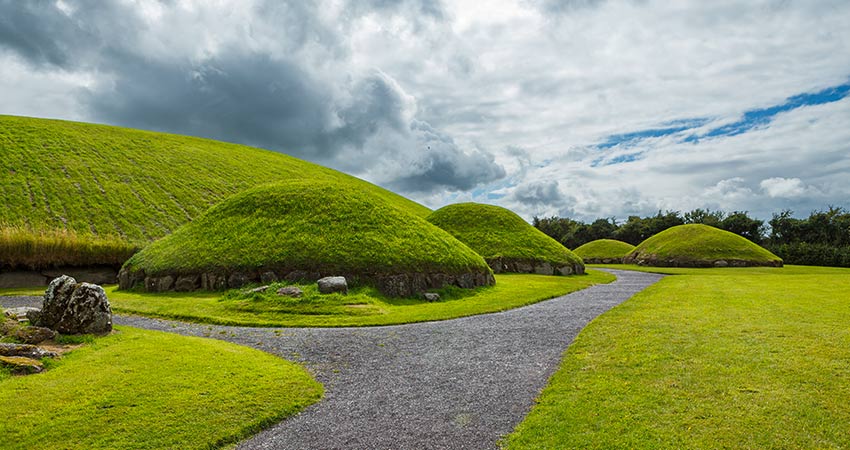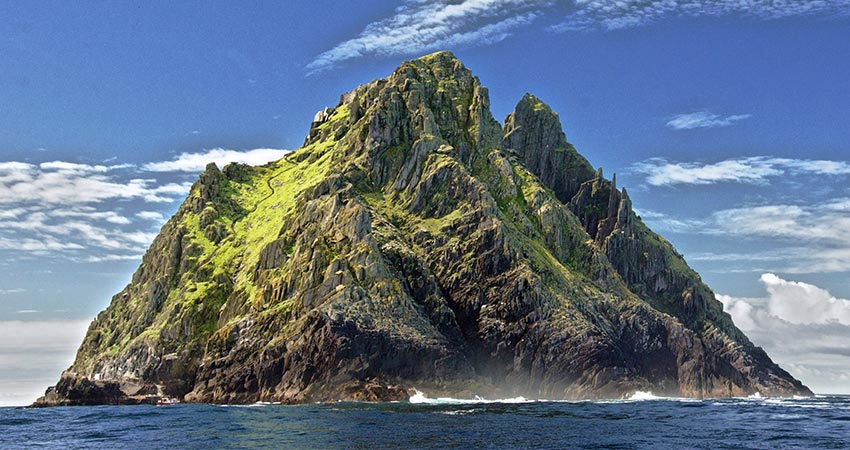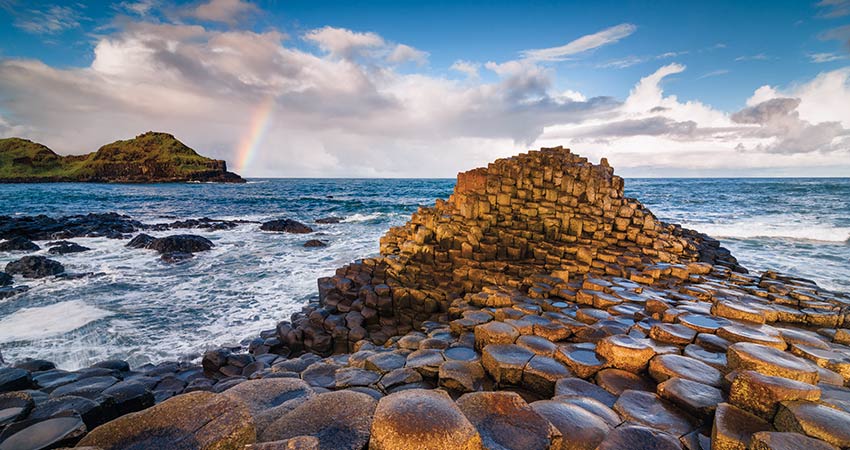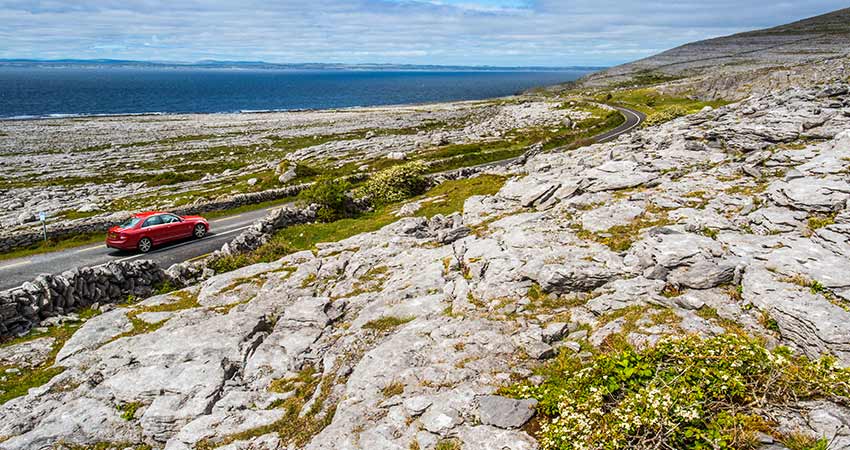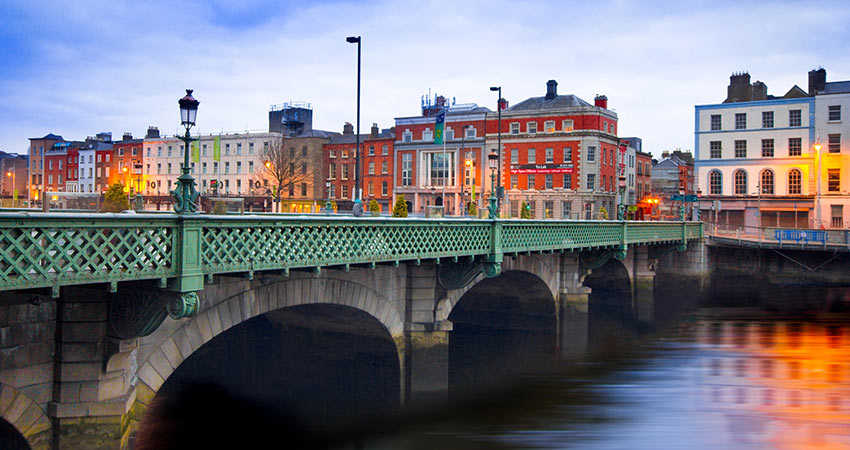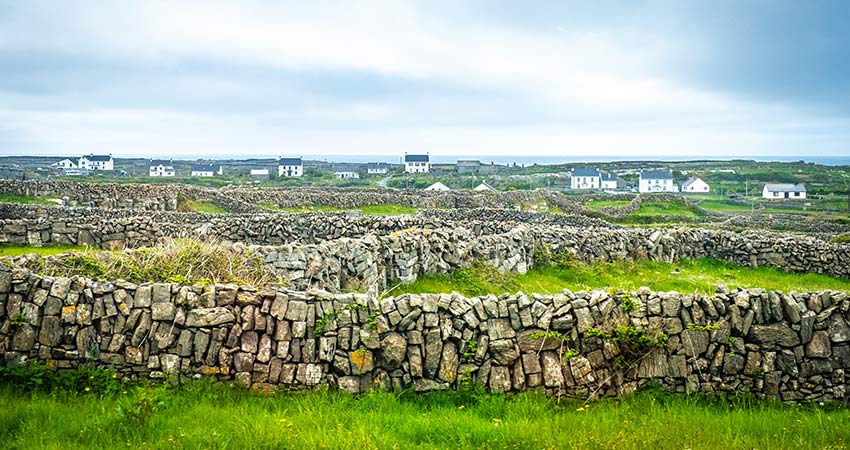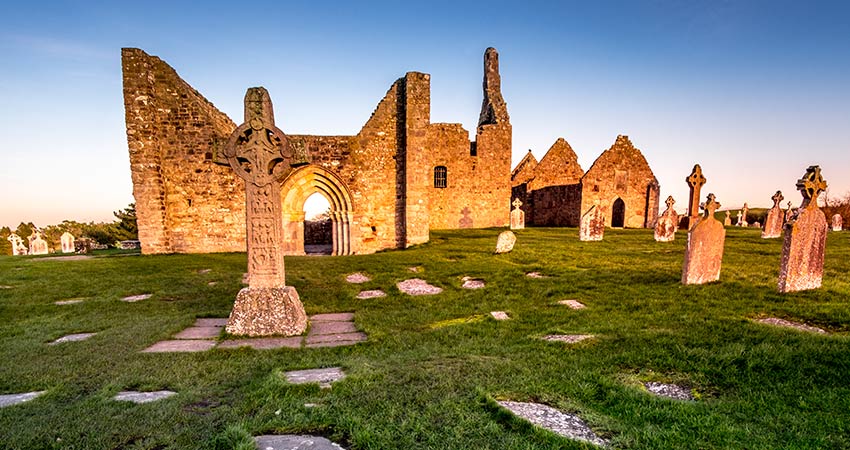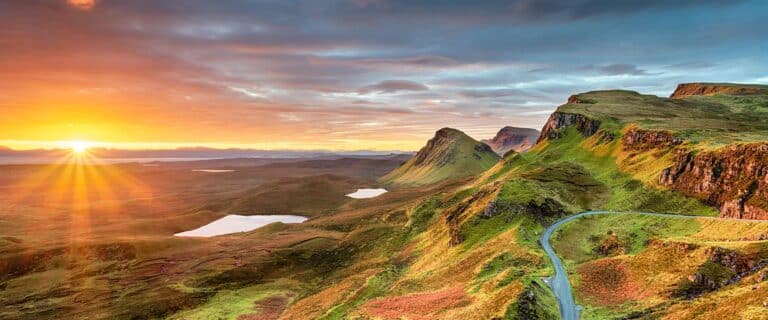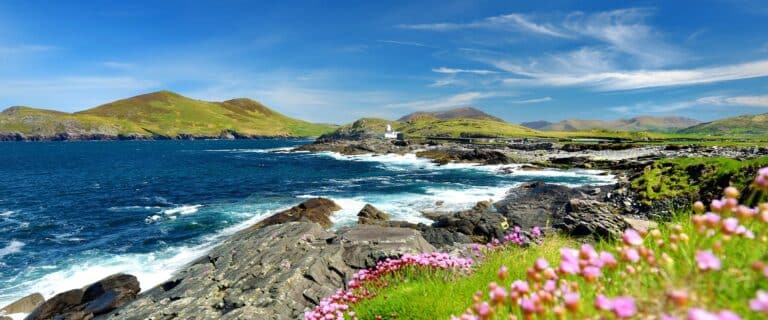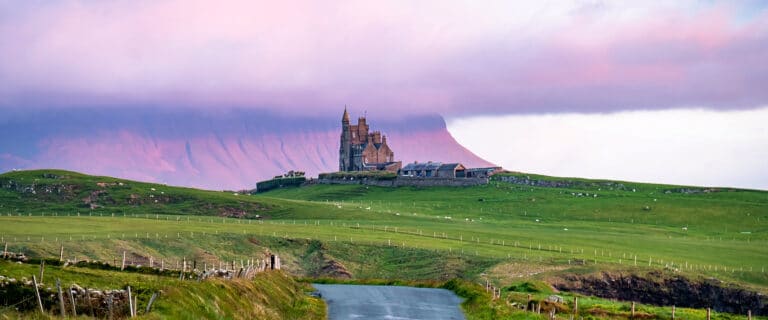You may decide to go to Ireland for your honeymoon, take a family trip to discover your roots, or you may simply want to explore one of the most mythic places in the world. Whatever your reasons for traveling to the Emerald Isle, consider putting a few UNESCO World Heritage Sites on your list. (It’s pretty hard to go to Ireland without visiting a UNESCO site!) From cityscapes to landscapes, this is a world of monumental inscriptions, ancient ceremonies, cultural riches, and geological formations that are absolutely transcendent.
Here is a list of Irish sites, along with several on UNESCO’s tentative list, for you:
Brú na Boinne (UNESCO World Heritage Site)
Also known as the Boyne Valley, this area was placed on UNESCO’s list in 1993. This is the home of Newgrange and Knowth, just a short distance from Dublin. One of the largest Neolithic landscapes in the world, it is a magnificent site of ancient rituals. The passage tomb of Newgrange was built around 3200 BC—it’s older than the Egyptian pyramids by at least 600 years. Left untouched by raiding armies, the site was only excavated in the 1960’s. Archaeologists discovered that on the winter solstice the low sun enters the tomb and lights up the burial chamber. Newgrange, then, is the world’s oldest solar observatory.
There are more than 90 monuments at Brú na Boinne, including burial mounds, passage tombs, and standing stones. Taken together, Newgrange, Knowth, and Dowth have the most megalithic art in Europe. Imagine the people who lived there. They did not have the wheel or metal tools, were exceptional artists, and had extraordinary engineering ability. 200,000 tons of stone were moved in order to build the mound that protects the passage grave. Gigantic boulders created a circle around it. The chamber itself is decorated with geometric patterns and complicated spirals. Who were these people?
Bronze Age inhabitants then used the Valley as a site for rituals; this continued through the Iron Age. According to Irish legend, the tombs are doorways to the “Otherworld” and also the homes of deities. The sheer mystery and intrigue make the Boyne Valley a place of power and wonder.
Skellig Michael (UNESCO World Heritage Site)
Designated as a UNESCO site both for its raw, natural beauty and its cultural importance, Skellig Michael is a must for many visitors to Ireland. This island in Country Kerry is known for its early Christian monastery. It took on superstar status when it appeared as Luke Skywalker’s Jedi temple in both the 2015 and the 2017 Star Wars films. Simply put, Skellig is stunning.
During the 6th century BC, monks chose to settle here for remote peace and quiet. They built a group of beehive huts from stone, perched on a ledge 700 feet above the ocean. They were self-sufficient and traded what they could forage or grow for goods from sailors who passed by. The monastery’s abbot was kidnapped by Vikings in 823; they attacked again in 838, sacking churches in Kenmare, Skellig, and Innisfallen Island. In total, the monks stayed on Skellig Michael for 600 years and then moved to the mainland at Ballinskelligs.
While here, you’ll see Ireland’s largest seabirds, called gannets. They nest and breed on cliffs, protected by the wild sea and shore line. There are also puffins, arctic terns, and fulmars. Basking sharks, which weigh up to 11,000 pounds, dolphins, turtles, and seals also ply the waters. People no longer live on Skellig Michael, but it is brimming with life and secret spots.
Giant’s Causeway and Causeway Coast (UNESCO World Heritage Site)
This astonishing site in Northern Ireland looks as if it could be the gods’ own sculpture garden. Tumbling down from the Antrim plateau, 40,000 huge, perfectly shaped columns line the shore. This spectacular geology gave rise to stories of heroic giants that crossed the sea to Scotland to do battle over lost ground or a lost lover. These basalt columns formed 60 million years ago. Because of the exposed cliff faces, scientists, especially those who study volcanoes, make regular pilgrimages to the Giant’s Causeway—they are considered key to understanding Earth’s geological history.
The Tentative List of Ireland’s UNESCO World Heritage Sites are up for consideration. These include:
The Burren (UNESCO Global Geopark)
From the Gaelic word Boireann, meaning rocky place, this is a colossal limestone plateau in the north of County Clare. Few trees grow here, but many plants thrive on the stone. In late spring through summer, colorful flowers burst through the fissures. They are a unique mix of Alpine, Mediterranean, and Arctic species. There are 28 types of butterflies that call the Burren home, and cattle graze freely as they have for centuries.
Caves and sinkholes are made for exploring, and you might come upon one of the 2,700 ancient monuments, standing in stark contrast against the sky. In the southern part of the Burren, limestone gives way to shale, forming the Cliffs of Moher.
The Historic City of Dublin (UNESCO Global Network of Learning cities)
By the British Empire’s 18th century, Dublin was second in size only to London. There were major urban developments during the country’s Georgian period, 1714 – 1830, and Europe’s first planning authority was established in 1757. The city plan called for wide roads that connected various areas. Dublin was also home to writers with a major global influence during that time, including Nobel Laureates William Butler Yeats, George Bernard Shaw, and Samuel Beckett.
The Céide Fields and North West Mayo Boglands (Nominated UNESCO Site)
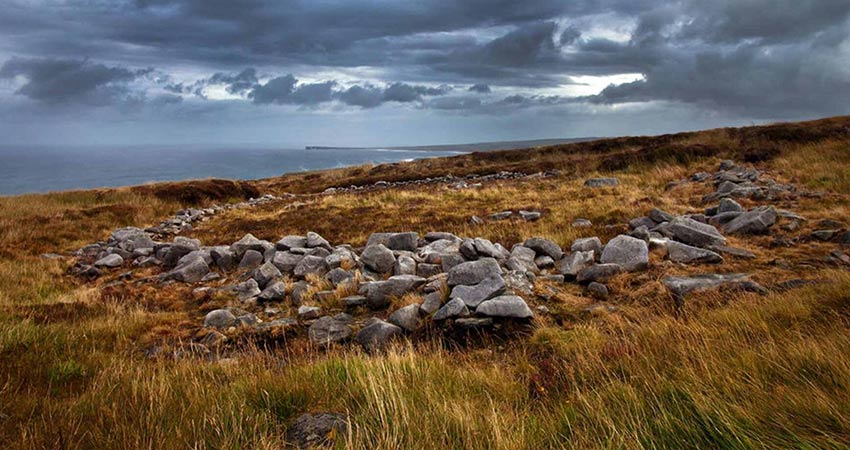
Go to northern County Mayo and the Céide Fields. Amazingly, beneath the boglands, there is a system of dwellings, fields, and tombs that is home to the largest Stone Age monument in the world. This 6,000 year old Neolithic site was slowly covered in peat, now 13 feet deep, and only discovered in the 20th century.
Western Stone Forts (Nominated UNESCO Site)
The ringforts in western Ireland were built until the early Medieval period, between the 8th and 12th centuries. These forts were made of stone or rammed earth, and they had circular defensive walls, many as high as 20 feet. Archaeologists believe that some were royal sites. They are found in beloved places such as the Aran Islands and Dún Aonghasa.
The Monastic City of Clonmacnoise and its Cultural Landscape (Nominated UNESCO Site)
Clonmacnoise dates from 545 AD and is situated on the banks of lovely River Shannon. Founded by St. Ciarán, it was at the convergence of the river and Ireland’s busy east-west road. By the 9th century, Clonmacnoise was the country’s most well-known monastery and was visited by scholars from every part of Europe. Between the 9th and 11th century, it was where the High Kings of Tara were buried. Unusual for that time, there were no Viking influences.
There are many places in Ireland that time left behind, and each is a window into our geologic or cultural past. Some reflect a glory that was felt and honored throughout Europe. Others still mystify us—who were the early Irish? They were advanced, possessed skills that boggle the mind, and they had a close relationship with nature. Visiting Ireland’s UNESCO Sites feeds our curiosity and fires our imaginations.
When you’re planning your vacation to Ireland, let your Destination Expert know what sort of places you’re most interested in. There are bound to be UNESCO sites nearby!


